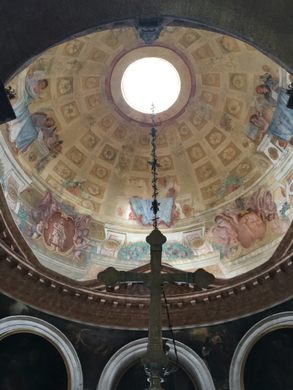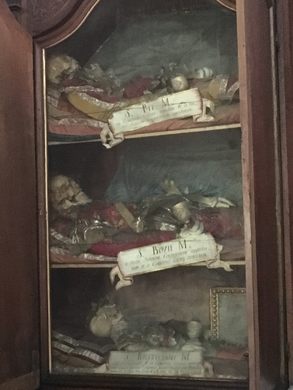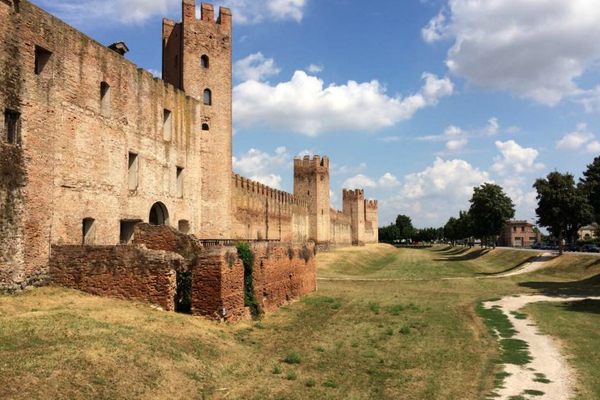Church of San Giorgio
This Italian church is as beautiful as it is common, except for the real skulls decorating the many mannequins inside.
Monselice, so called since Roman times for its flint quarries (then called Mons Silicis), is a perfect day trip from Venice, reachable in an hour by train from Venice’s Santa Lucia train station.
While Rome is the Italian superstar of art and Catholic salvation, smaller towns which dot the Italian countryside are often ignored, though throughout history they also offered pilgrims the same opportunity to guarantee their own religious deliverance.
In Monselice, just 50 minutes from Venice, religious visitors unable to make the pilgrimage to Rome were offered the chance to visit the Sette chiesette or “Seven Little Churches,” instead of the seven main basilicas of Rome, in order to pave their entry to heaven. Pope Paul V granted these indulgences in 1606 by way of a papal bull, a decree that still holds true today, though without the crowds, lines, marble and opulence found in Rome. Each of the seven basilicas is represented here in miniature, with paintings representing key saints and their stories. But perhaps most interesting is the last church found at the road’s end, the chapel connected to the Villa Duodo, which houses a macabre display of relics.
Located within Villa Valier (then called Villa Duodo) high atop the hill overlooking Monselice and the surrounding countryside, the church is dedicated to San Giorgio and upon first entry appears to be like any other 18th-century chapel, rich with pastel frescos, gem-toned stained glass and an intricately carved marble altar and floor. But once inside this first chapel, the strangeness of the chapel becomes apparent – this is in fact not one chapel, but two.
The second chapel is entered by a small doorway on the right. Passing by the caretaker’s shop and desk, you enter this shrine to the dead with the light of the first chapel still to your left, but shelves of human bones to your right. Each skull sits above a beautifully dressed mannequin, with clothes of silk in dark greens, blues and reds, white gloves and a golden chalice bearing the inscription “symbolum martyrii.” It is this inscription, along with the plaques in each glass display case denoting the bones’ place of origin, that gives us the clues as to the beginnings of these mysterious relics.
As the story goes, the bones seen here were bought from the catacomb of San Callixto in Rome at a time when the remains of early Christian martyrs were highly valued and considered holy. The catacomb of San Callixto was in use from the 2nd to 4th centuries, and the bodies found at Monselice have undergone carbon dating to confirm they originate from this time period as well. Fifty martyrs were buried at the crypt of San Callixto, 25 of which have found their final resting spot here in Monselice.






















Follow us on Twitter to get the latest on the world's hidden wonders.
Like us on Facebook to get the latest on the world's hidden wonders.
Follow us on Twitter Like us on Facebook